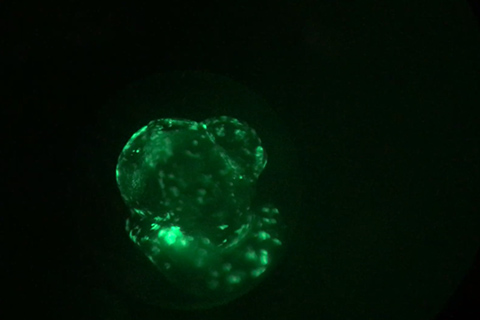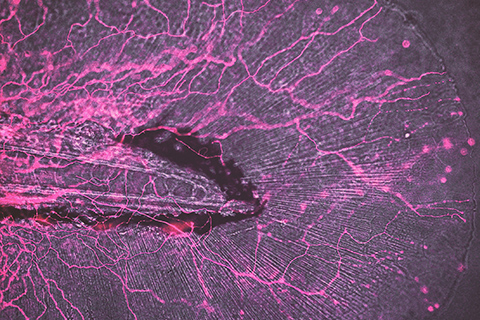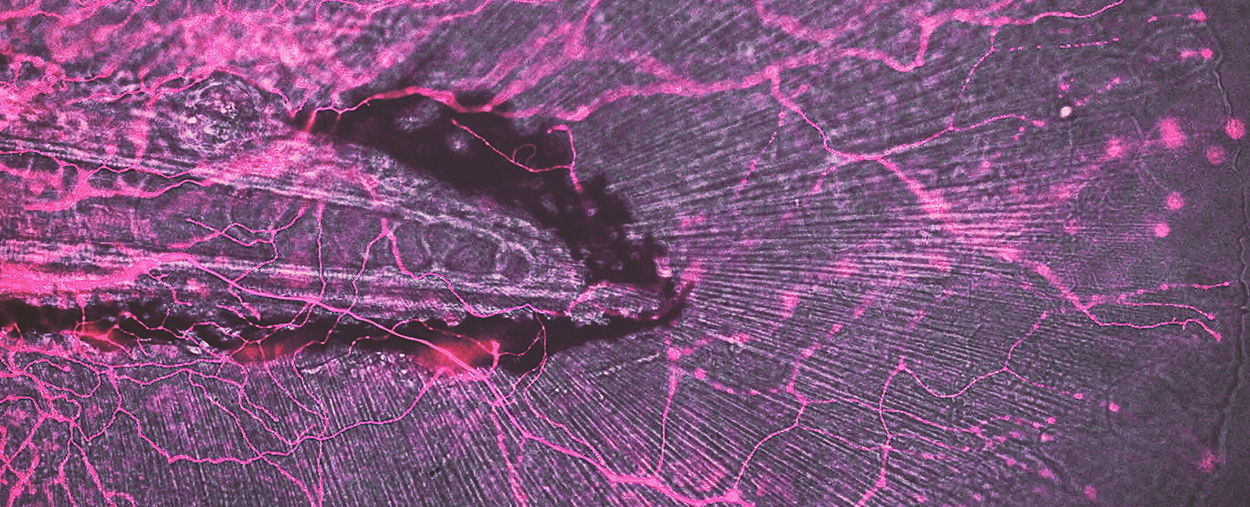
Rieger Lab Fall 2023 - Pictured left to right: Lauryn Lee, Josh Becher, Miguel Portales Guemes, Mikaela Vlach, Sandra Rieger (PI), Sergio Gutierrez Roche, and Chia-Jung Hsieh
The Rieger lab is working on several questions with regard to axon-keratinocyte interactions:
- What type of interactions exist between somatosensory neurons and epidermal keratinocytes following tissue injury?
- What molecular processes promote their crosstalk?
- How are these molecular processes perturbed under disease conditions?
- Can we manipulate certain molecular pathways in neurons or keratinocytes to develop treatments for degenerative conditions leading to peripheral sensory axon degeneration (a type of peripheral neuropathy) and wound healing or appendage regeneration defects?
We are using zebrafish as a model system to characterize sensory neuron-keratinocyte interactions in vivo, and we have recently begun to also investigate rodent models for comparative purposes. We focus primarily on mechanisms involving hydrogen peroxide (H2O2) signaling, as we identified this molecule to be a key mediator of the crosstalk between sensory neurons and keratinocytes following injury. We discovered that H2O2 generated in wound keratinocytes promotes sensory axon regeneration (Rieger & Sagasti, PLoS Biology 2011). We also found evidence that hormetic concentrations of H2O2 are critical for proper wound repair. If the concentrations are too high, H2O2 can damage keratinocytes and induce wound healing defects. Similarly, we identified that high concentrations of H2O2 are induced in keratinocytes during treatment with the chemotherapeutic agent paclitaxel, leading to upregulation of the matrix-degrading metalloproteinase, MMP-13, in keratinocytes. Increased MMP-13 activity correlates with epidermal damage and sensory axon degeneration (Lisse et al., PNAS 2016).










